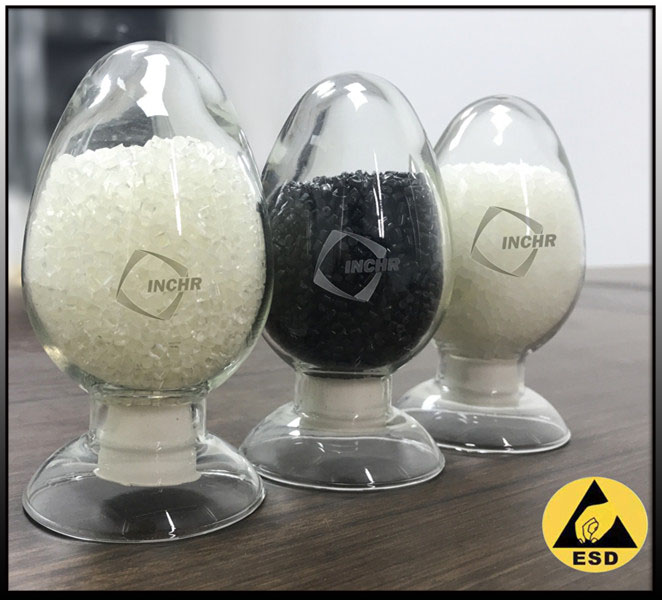Static electricity silently destroys up to 40% of electronic components during manufacturing and handling—unless properly controlled.
In the ultra-precise world of electronics manufacturing, a single electrostatic discharge (ESD) can destroy sensitive components in microseconds. This invisible threat costs the industry billions annually. ESD plastics—engineered materials that safely dissipate static charges—have become the frontline defense. Let’s explore why these materials are non-negotiable in modern electronics and how they’re evolving to meet tomorrow’s challenges.

The Silent Threat: How ESD Damages Electronics
Component Failures: ESD events can melt circuits, degrade performance, or cause immediate device death. In advanced 7nm-5nm chips, ESD-induced soft failures (like voltage drift) now account for 25% of reliability issues—up from 10% in older nodes 5.
Industry Impact: Studies show 37% of electronic component failures trace back to ESD or electrical overstress (EOS). In integrated circuits, this jumps to 40% 5.
Cost Multiplier: A single ESD-related respin for a 3nm chip can cost over $200 million due to wasted masks and EUV lithography time 5.
How ESD Plastics Work: Static Dissipation Explained
ESD plastics are engineered to safely control static electricity through three mechanisms:
Conductive Materials: Embed carbon/graphene fibers to create continuous discharge paths (surface resistivity: 10^3–10^5 Ω/sq).
Static-Dissipative Polymers: Use additives like PEEK or PPS composites to bleed off charges gradually (10^6–10^9 Ω/sq) 9.
Anti-Static Coatings: Prevent charge generation altogether via hydrophilic layers that absorb moisture 2.
Key Properties Defining High-Performance ESD Plastics
Controlled Resistivity: Surface resistance tuned to your application—e.g., cleanrooms need 10^6–10^9 Ω/sq to avoid slow discharges that attract contaminants.
Low Particle Shedding: Critical for semiconductor fabs. New e-skin flat ESD materials, tested in ISO Class 1 cleanrooms, emit near-zero particles even at high speeds 10.
Mechanical Durability: Glass-reinforced PPS (e.g., RTP’s ESD C 1305) retains strength at 200°C+ and resists chemicals like etchants 9.
Design Flexibility: Materials like polycarbonate-ESD blends enable complex injection-molded trays, connectors, and robot arms.
Where ESD Plastics Are Non-Negotiable
Semiconductor Manufacturing:
Wafer carriers, IC trays, and FOUPs (Front-Opening Unified Pods) use static-dissipative PEEK and PC to protect $100,000+ wafers.
Medical Electronics:
MRI/CT scanner components and surgical tools leverage ESD plastics to prevent interference and ignition in oxygen-rich environments.
Automotive E/E Systems:
EV battery modules and ADAS sensors rely on ESD-safe housings to survive 15+ years of vibration and thermal cycling.
Aerospace & Defense:
Avionics bays demand materials that combine ESD protection with flame retardance (e.g., UL94 V-0 rated PPS) 9.
Innovations Reshaping the Market
3D-Printable ESD Materials: Filaments like carbon-black PETG enable rapid prototyping of ESD-safe fixtures and tools 8.
Sustainable Formulations: Recyclable ESD plastics (e.g., BASF’s Ultramid® ECO) reduce waste in packaging and trays.
Smart Integration: igus’ e-skin flat ESD now embeds i.Cee ultrasonic sensors to monitor cable health in real-time 10.
Why This Matters for Your Next Project
The global ESD plastics market will hit $5.1B by 2030 (CAGR 6.3%) 8, fueled by IoT devices, 5G infrastructure, and EVs. Yet material selection remains nuanced:
Conductive grades (growing at 8.5% CAGR 3) suit high-risk zones like PCB assembly.
Dissipative polymers dominate static-control packaging (45% market share 3).
For hybrid needs? Multi-layer solutions (e.g., static-safe outer layers + metal-shielded cores) are emerging.
Protect your electronics from invisible threats. At INCHR-ESD, we engineer next-generation ESD plastics for extreme reliability—whether you’re building satellite components or surgical robots. Explore our material library →




